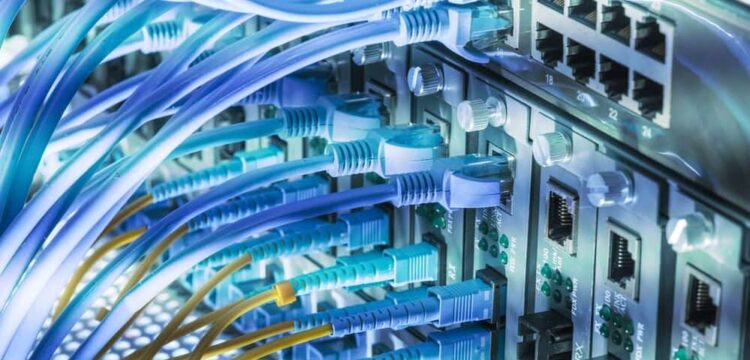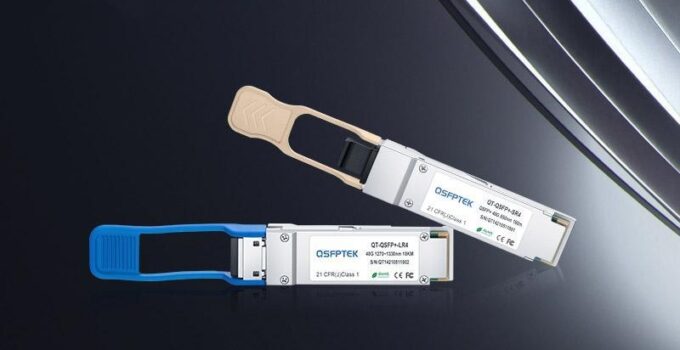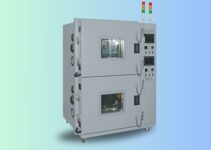The 40GBASE-SR4 technology is an extension of the previous 40GBASE-SR technology. The SR4 standard has a maximum transmission rate of 10 Gigabits per second, which is twice as fast as the previous SR standard. The new technology works over multimode fiber and single-mode fiber, which means that it can be used in any data center environment.
40GBASE-SR4 technology is designed to work with other standards such as 100GBASE-SR10 and 400GBASE-SR10. It also supports wavelength division multiplexing (WDM) for wavelength routing and monitoring, which means that it can be used in any data center environment.
40GBASE-SR4 technology is the latest in data center network technology. It is designed to deliver high-performance networking in a cost-effective manner.
The name of the technology comes from its specification: it can transfer data at speeds up to 40 gigabits per second over a distance of up to 100 meters. Moreover, it is backward compatible with 10GBASE-SR4 and 10GBASE-LR4 standards, meaning that it can be used in both new and old data centers alike.
40GBASE-SR4 technology is an iteration of the 40GBASE-SR standard. It has a data rate of 160 Gbps, which is twice the speed of previous standards.
It’s used in data center networks to transmit high-bandwidth traffic from a server to a switch or from one switch to another. It can also be used for other devices that require high bandwidth such as video surveillance cameras and medical imaging equipment.

Source: dqindia.com
40GBASE-SR4 technology is a new standard for data center networks that can provide speeds up to 4x faster than the previous standard.
40GBASE-SR4 optical module(click here to know more) is a new standard for data center networks that can provide speeds up to 4x faster than the previous standard. It uses advanced modulation formats, such as 256QAM, and has a higher spectral efficiency than its predecessors.
The technology can be used in any data center network infrastructure and it provides an upgrade path from 10GBASE-SR10 or 40GBASE-CR4 to 40GBASE-SR4.
How at 40Gbps can Break Through the Traditional 10 Gbps Barrier
The data transmission speed is the rate at which data is transferred in a communication channel. The traditional 10 Gbps barrier can be broken through with 40 Gbps ethernet connector types.
The ethernet connector types are the physical interfaces that allow computers to connect to each other and share data. The traditional 10 Gbps barrier can be broken through with 40 Gbps ethernet connector types.
The latest addition to the Ethernet family is the 40 Gigabit Ethernet. This standard has broken through the traditional 10 Gbps barrier. The 40GBPS is fast enough to transmit HD video and audio in real-time, which is a major improvement from 10GBPS.
The IEEE (Institute of Electrical and Electronics Engineers) 802.3ae-2003 specification defines the physical layer and media access control for 40 Gigabit Ethernet. The standard specifies that a maximum of 4 pairs of Category 6A or better unshielded twisted pair cabling can be used for transmitting data at 40 GBPS over distances up to 100 meters with the full duplex operation.
The 40 Gbps Ethernet standard is the latest in computer networking. It is a 10 Gbps Ethernet connection that has been upgraded to 40 Gps.

Source: fasttrackcomm.net
The 40 Gbps Ethernet standard is a 10 Gbps connection that has been upgraded to 40 Gps. The upgrade is due to the fact that data transmission speeds have increased exponentially and it is no longer enough for networks to just be able to transmit data at 10 Gbps.
The new standard will allow for faster data transfer and better network performance, as well as improved security features that can keep up with the increasing number of devices and threats on networks.
The Benefits of Moving To Higher Speed Ethernet
In the past, Ethernet networks were mainly used for data transfer. But now, Ethernet is being used for a lot of other purposes such as connecting devices, sensors, and machines. As more and more devices are connected to the network, there is an increase in the need for faster speeds. In this article, we will see how 40GBASE-SR4 technology can help to increase network speeds and what other benefits it has.
The use of higher-speed networks has increased over time as there has been an increase in the number of connected devices on networks. These days you’ll find that many people are using their internet connection to stream video content to different devices at home or work. In order to support these higher bandwidth applications, businesses need faster speeds on their
The benefits of moving to higher-speed Ethernet will be discussed in this section. The first benefit is that it’s a lot cheaper than other technologies like fiber optics. The second benefit is that it’s more future-proof than other technologies. The third benefit is that it’s simpler to install and maintain.
The 40GBASE-SR4 technology, also known as the 40 Gigabit Ethernet, has been around for a few years now. It has been implemented in data centers and enterprise networks all over the world with great success. One of the reasons for this success is the simplicity of installation and maintenance of the technology when compared to other technologies like fiber optics or 10 Gigabit Ethernet.
Conclusion

Source: techwithtech.com
This article provides various details about the 40GBASE-SR4 optical module and the benefits that 40G Ethernet brings to us. 40GBASE-SR4 is the most critical device for next-generation networks. In conclusion, I believe that there are many reasons to change your network to support higher speeds. One of the most important is the fact that you will be able to use your internet connection more efficiently. This will allow you to do more with your time and it will also help you avoid frustration when trying to connect with others on the internet.





